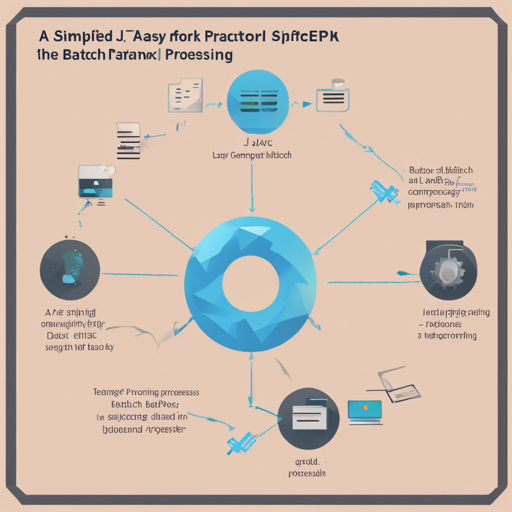Welcome to the world of Easy Batch! If you’re looking to transform your data processing tasks in Java, you’ve landed at the right spot. In this blog, we’ll walk you through how to get started with Easy Batch and what you need to know to troubleshoot effectively.
What is Easy Batch?
Easy Batch is a streamlined framework designed to handle batch processing in Java, primarily focusing on simple ETL (Extract, Transform, Load) jobs. Think of it as a friendly chef in a busy kitchen, where every dish (or data processing job) needs the right ingredients (data) and steps (operations) to come together tastefully.
How Does Easy Batch Work?
Data processing in Easy Batch resembles crafting a recipe. You gather your ingredients (records), prepare them one by one, and then combine them into the final dish (output). Here’s how it works in three stages:
- Reading: Records are read sequentially from a data source.
- Processing: Each record is transformed as per your recipe (logic).
- Writing: The final dish is created in batches and served at the specified data sink (output location).
Here’s an analogy to clarify this further: imagine a processing pipeline as a conveyor belt in a factory. Each product (record) that arrives on the belt goes through several stages before it is packed and sent out. Easy Batch handles each of these stages seamlessly.
How to Get Started with Easy Batch
Ready to cook? Here’s how to start your project:
- First, add the following dependency to your project:
<dependency>
<groupId>org.jeasy</groupId>
<artifactId>easy-batch-core</artifactId>
<version>7.0.2</version>
</dependency>
$ mvn archetype:generate -DarchetypeGroupId=org.jeasy -DarchetypeArtifactId=easy-batch-archetype -DarchetypeVersion=7.0.2
Example: Transforming Tweets from CSV to XML
Let’s dive into a practical example where we have a CSV file with tweets, and we want to transform it into an XML format:
Path inputFile = Paths.get("tweets.csv");
Path outputFile = Paths.get("tweets.xml");
Job job = new JobBuilder<String, String>()
.reader(new FlatFileRecordReader(inputFile))
.filter(new HeaderRecordFilter())
.mapper(new DelimitedRecordMapper(Tweet.class, "id", "user", "message"))
.marshaller(new XmlRecordMarshaller(Tweet.class))
.writer(new FileRecordWriter(outputFile))
.batchSize(10)
.build();
JobExecutor jobExecutor = new JobExecutor();
JobReport report = jobExecutor.execute(job);
jobExecutor.shutdown();
This code snippet outlines a job that reads tweet records from a CSV file, processes each record according to the logic you’ve defined, and writes the transformed data to an XML file. It’s like a factory assembly line, where each worker (code block) knows exactly what task to perform before passing it along to the next.
Troubleshooting
While working with Easy Batch, you might encounter a few hiccups. Here are some troubleshooting tips:
- File Not Found: Ensure that the file paths specified in the code are correct.
- Data Format Errors: Check that your data conforms to the expected format for each mapper and marshaller.
- Dependency Issues: If you face any Maven-related issues, verify that your integration was successful by re-checking the dependency in your project.
- For more insights, updates, or to collaborate on AI development projects, stay connected with fxis.ai.
Conclusion
At fxis.ai, we believe that such advancements are crucial for the future of AI, as they enable more comprehensive and effective solutions. Our team is continually exploring new methodologies to push the envelope in artificial intelligence, ensuring that our clients benefit from the latest technological innovations.
Ready to harness Easy Batch for your next project? Dive in, experiment, and enjoy a simplified approach to data processing!

